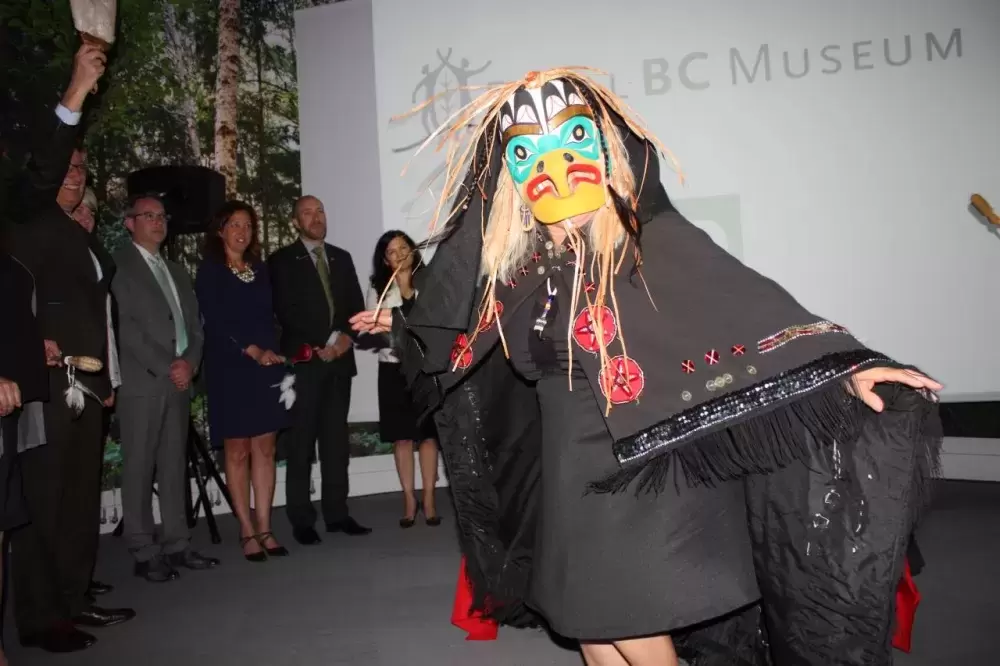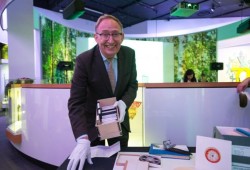Locked away somewhere deep in the Royal British Columbia Museum’s storage space are volumes of priceless audio tapes containing voice recordings of First Nations people speaking or singing in their mother tongue.
First Nations languages are at risk due to disruptions caused by colonization and policies of assimilation, including legislation, residential schools, loss of resources and loss of traditional ways of life. The last speakers of many Indigenous languages – typically elders – are passing on, taking with them entire storehouses of cultural, historical and environmental knowledge. Fluent speakers now make up only 5.1% of the total First Nations population in Canada and the vast majority of these are elders.
In a time when the race is on to save fading First Nations languages from extinction, access to these recordings has become urgent. But the original recordings are old and fragile. If any were to be loaned out and damaged there’s no telling what could be irretrievably lost.
On Friday, Aug. 18 the Royal BC Museum along with the TD Bank launched the First Nations Language Revitalization Project at the Our Living Language Exhibit. The TD Bank sponsored the project, contributing $50,000. The contribution will allow the museum to accelerate the digitization of the audio tape collection.
By digitizing the audio tapes, the originals will be safely stored in perpetuity while digital copies can be shared with the public more freely.
“As so much of this material is of immense significance to Indigenous communities, we are moving as quickly as we can to speed up their long-term preservation and access,” says Royal BC Museum CEO Professor Jack Lohman.
“TD is extremely pleased to support the Royal BC Museum’s First Nations Language Revitalization Project which will digitize and preserve hundreds of cassette tapes containing Indigenous languages for future generations,” said Doris Bear, Vice President of Indigenous Banking, TD Band Group.
The Royal BC Museum has approximately 4,000 First Nations audio tapes in its collection.
For Nuu-chah-nulth-aht, there is important cultural history in that collection. Among the thousands of recordings is a box of cassette tapes affectionately known as the Robinson Box of Treasures.
According to Jessica Sault, her parents, Doug and Kathy Robinson, lived next door to Alberni Indian Residential School, separated only by a fence. Children from the ‘school’ would sometimes sneak over to the Robinson home for a quick taste of what they longed for most – the feeling of family and culture.
It was also a place where Nuu-chah-nulth elders, fluent speakers and singers came for clandestine evenings of culture. Between the years 1885 and 1951the government of Canada prohibited the potlatch. Anyone caught potlatching faced imprisonment. It was a government strategy to force assimilation on Canada’s aboriginal people. It was a time when gathering, singing and dancing was forbidden and, inevitably, some of the language, stories and songs were lost in the process.
According to Sault, her parents would invite elders to their house where Kathy would feed them and they would talk and sing. Doug recorded each of the sessions on cassette tape. Besides the songs themselves, Doug captured elders speaking about the history of the songs, where they came from and who they belonged to. “These are not only Tseshaht songs and stories, but also songs and dances from all of Nuu-chah-nulth territory,” said Sault.
Sault explained to the crowd that, in Nuu-chah-nulth culture, songs were not just for entertainment. “Our songs are a rich and important part of the political and social structures for people of oral tradition” she told them.
Anyone alive that would know the contents of the tapes would be over the age of 80.
“My mother, Kathy Robinson (age 86) is one of the last fluent Tseshaht speakers,” said Sault. It was Tseshaht elder Kathy Robinson that entrusted archeologist and family friend Denis St. Claire with the box of Robinson tapes to bring to the museum.
Sault, with the assistance of Nicole Mandryk, Anishinabe, and Sarah Rhude, Mi’kmaw, sang a thank you song to TD Band and RBCM. They finished up with an eagle song.
“My father wanted to make sure that the tapes were generously used, just as they were generously taped by the old ones,” said Sault. She said she was there on behalf of the old people that used to come to their place.
There are over 171 cassette tapes in the Robinson collection covering almost every Nuu-chah-nulth nation. Once all the material is digitized, sorted and documented, Sault says there will be a feast where they will showcase the songs and start the long journey of matching songs to families.
Sault said that retaining the language is vital to aboriginal health and healing. “My father recorded it on cassette tape and it’s because of this that we can sing it today,” she said.
“TD Band, you are a leader for taking this important step in supporting this language work and I commend you,” said Sault.
There are 4,000 audio tapes in the museum collection, each with several hours of recordings. Once digitized, the tapes could be uploaded to the Internet for sharing.
“Imagine young people having access to Voices of our Ancestors,” said Doris Bear.








